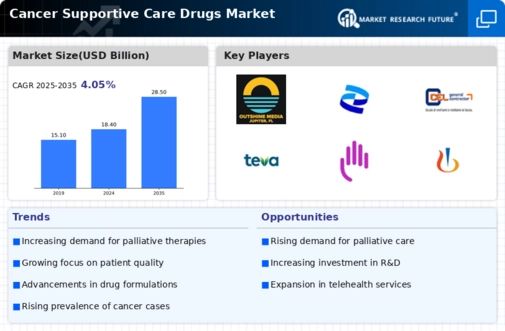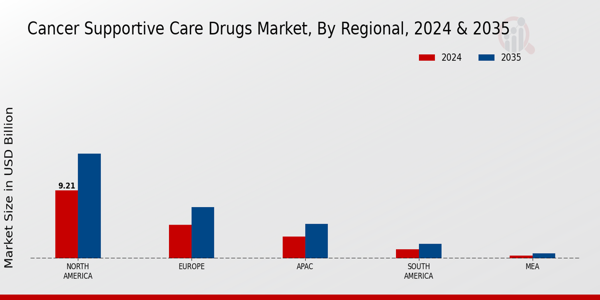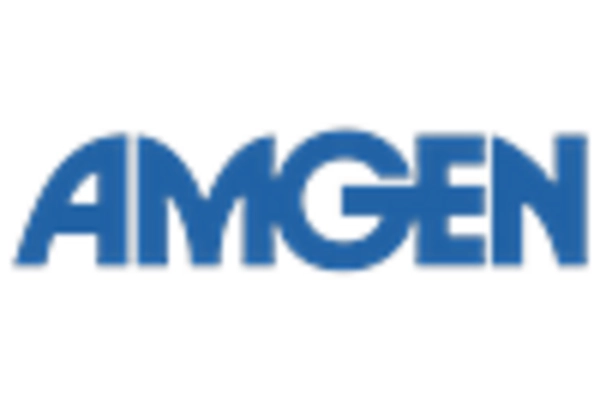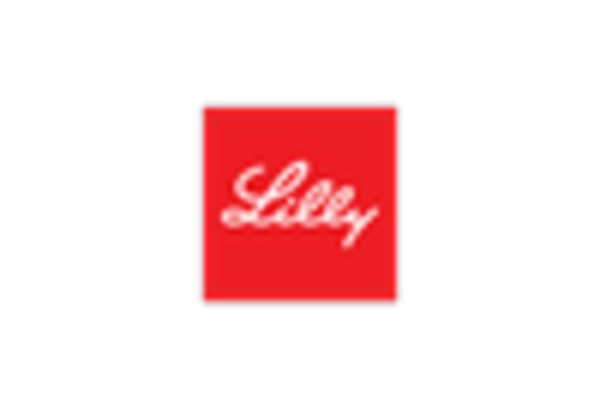Growing Incidence of Cancer
The rising incidence of cancer worldwide is a primary driver for the Cancer Supportive Care Drugs Market. As cancer cases continue to increase, the demand for supportive care drugs that alleviate symptoms and improve the quality of life for patients is likely to rise. According to recent statistics, cancer is projected to affect millions of individuals annually, necessitating effective management strategies. This trend indicates a robust market potential for drugs that address side effects associated with cancer treatments, such as chemotherapy and radiation therapy. The Cancer Supportive Care Drugs Market is thus positioned to expand as healthcare providers seek to enhance patient outcomes through innovative therapeutic options.
Rising Awareness of Palliative Care
Rising awareness of palliative care is shaping the Cancer Supportive Care Drugs Market. As healthcare professionals and patients increasingly recognize the importance of managing symptoms and enhancing quality of life, the demand for supportive care drugs is likely to grow. Educational campaigns and advocacy efforts are contributing to a shift in perception, emphasizing that supportive care is an integral part of cancer treatment. This heightened awareness is expected to drive market growth, as more patients seek access to medications that alleviate pain and discomfort associated with cancer and its treatments. The Cancer Supportive Care Drugs Market stands to benefit from this evolving landscape.
Increased Investment in Cancer Research
Increased investment in cancer research is a crucial driver for the Cancer Supportive Care Drugs Market. Governments and private organizations are allocating substantial funds to explore new treatment modalities and supportive care options. This financial commitment fosters innovation and accelerates the development of drugs that can effectively manage the side effects of cancer therapies. The market is expected to benefit from this trend, as research initiatives often lead to breakthroughs in drug formulations and delivery systems. Consequently, the Cancer Supportive Care Drugs Market is poised for growth as new therapies emerge from ongoing research efforts.
Regulatory Support for Innovative Therapies
Regulatory support for innovative therapies is a significant factor influencing the Cancer Supportive Care Drugs Market. Regulatory agencies are increasingly streamlining approval processes for new supportive care drugs, recognizing the urgent need for effective symptom management in cancer patients. This supportive regulatory environment encourages pharmaceutical companies to invest in research and development, leading to a wider array of treatment options. As a result, the Cancer Supportive Care Drugs Market is likely to experience accelerated growth, with new drugs entering the market more rapidly. This trend not only enhances patient access to necessary therapies but also stimulates competition among manufacturers.
Technological Advancements in Drug Development
Technological advancements in drug development are significantly influencing the Cancer Supportive Care Drugs Market. Innovations in biotechnology and pharmacology have led to the creation of more effective and targeted supportive care medications. These advancements not only improve the efficacy of existing drugs but also facilitate the development of new formulations that cater to specific patient needs. For instance, the introduction of biologics and personalized medicine has transformed treatment paradigms, allowing for tailored approaches to symptom management. As a result, the Cancer Supportive Care Drugs Market is likely to witness an influx of novel therapies that enhance patient care and satisfaction.


















Leave a Comment